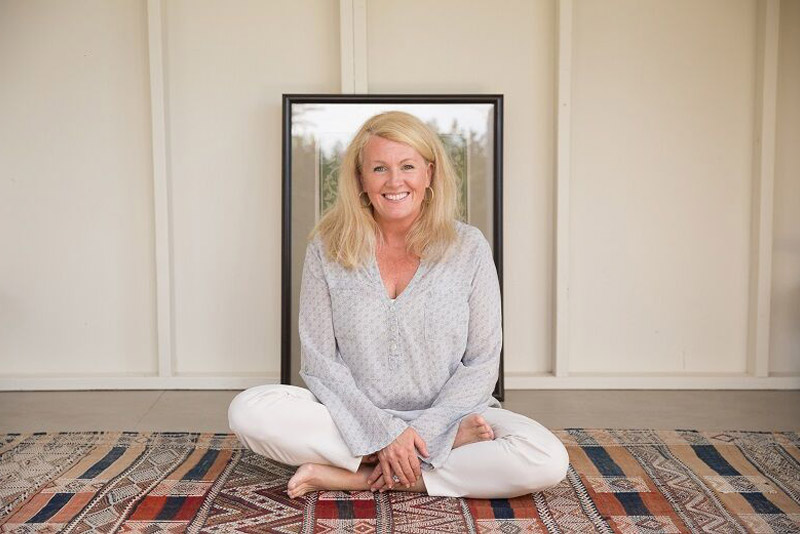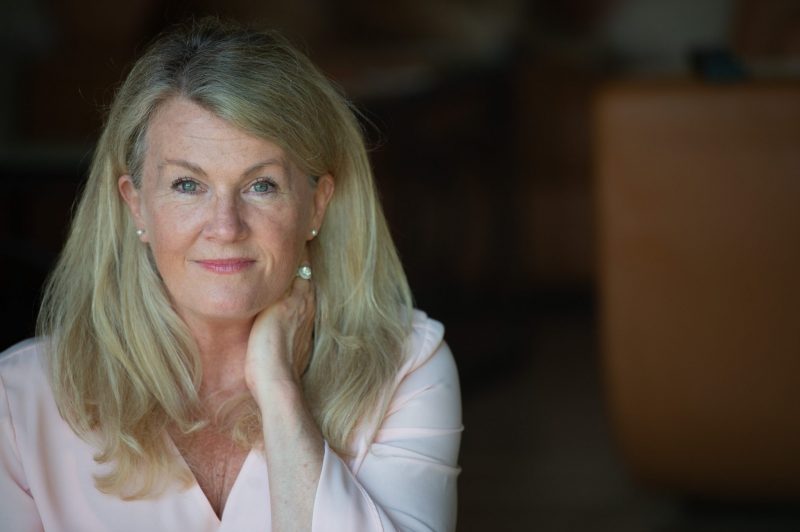Joy & Sorrow

Joy & Sorrow
A student recently asked, “I am truly concerned about all the pain and suffering humans and animals are experiencing due to war, floods, and hurricanes. For some reason, and I don’t know why, but I feel joy anyway. Is there something wrong with me?”
The answer is no. There is nothing wrong with you. Instead, it’s likely that you have a spiritual practice that has cultivated an intimacy with who you really are. You may already have directly experienced the fact that joy is your true essence, peace is your undercurrent, and both are indelible. And for the record, joy is never inappropriate.
Joy doesn’t need to be erased even when the sorrow is great. Sorrow does not need to be eliminated in order to experience a few moments of joy. You can navigate and hold both. This takes awareness of who you are and the willingness to be present to what is.
In this month’s lesson at the Meditation Teacher Academy, students are discovering meditation techniques and contemplative practices to help them connect to their heart’s wisdom and compassion in order to navigate the sea of challenges that we all face with more ease.
We are all learning the importance of being present with emotional pain – ours and that of those who suffer. We’re tapping into the immense power of compassion and self-compassion. Among the practices we’re exploring are a Loving Kindness (Metta) Meditation, a Loving Your Body Meditation, HeartMath’s Heart Lock-In Technique, a Blessing Ceremony, creating and using personal affirmations, the R.A.I.N. technique, the practice of Ho’oponopono, self-inquiry on thoughts that create suffering, we’re tuning in to the wisdom and alchemy of the heart, and how to be with suffering without taking a spiritual bypass.
(If you’d like to find out more about becoming a meditation and mindfulness teacher, you can visit this page. Or, if you’d like to experience a live guided meditation practice visit this page for a schedule. You can also visit my YouTube channel for recordings of the above.)
The late Zen Buddhist monk, Thich Nhat Hanh, taught that by acknowledging suffering with compassion and mindfulness, you can transform it. Even in times of sorrow, each of us has the ability to smile and experience the beauty of life by embracing both joy and pain as part of the human experience.
Here are three keys to navigating the seemingly opposite experiences of joy and sorrow:
- Keep your attention in the present moment: see the world with the eyes of the heart.
“Sorrow prepares you for joy. It violently sweeps everything out of your house, so that new joy can find space to enter. It shakes the yellow leaves from the bough of your heart, so that fresh, green leaves can grow in their place.” – Rumi, 13th c. Sufi poet
Rumi, a man deeply in love with God, suggests that sorrow, in its intensity, clears a path for new joy. By recognizing that sadness is not the end, but a clearing for something greater, you can remain open to joy even during life’s most difficult moments.
So, with this in mind, you can move your attention from the thoughts of how things are going to go, or how things were, and bring your attention to your heart and dwell here, right here, in this moment, even if you don’t know what to do next.
When your attention is in the present moment you can feel your feelings fully. You can be attentive to possibilities and opportunities to be compassionate. And, you can only soothe your broken heart and accept and nurture yourself in the present.
Also, in the present moment, you can be responsive rather than reactive. This means that when you notice that you feel “triggered” a.k.a. reactive, whether it be by an interaction with a friend or family member, or by something you hear in the news, it’s important to take a breath, and find that pause between stimulus and your response. That pause is where the choice is, the choice to choose your attitude, response, and remember who you want to be in the world.
Also, when your attention is anchored in the moment, you don’t miss opportunities for synchronicities or impulses to help, and to tune in to the subtle yet real forces of love, light, joy, and seeing with the eyes of the heart. Here’s a story to illustrate this:
A woman sat quietly on a bench while a Saturday morning unfolded at the park.
“Hello,” the young girl skipped over to greet the woman.
“Good morning to you,” the woman replied with a kind smile.
“Where are you from?” asked the girl, perching on the bench next to the woman she had not seen before.
“What makes you think I come from somewhere else?” she asked the girl with a glint in her eyes.
“There is a different light that shines from you,” the girl responded.
“Can you see this light?” the woman asked.
“Not with my eyes, but I kind of feel it,” the girl explained softly, as if sharing a secret.
“Ah,” replied the woman, also softening her voice, “You see it with your heart.”
“Yes.” Replied the girl.
They sat together for a while in silence. Then the girl asked, “Can you take me there?”
“No,” answered the woman, but as I sit here and enjoy this beautiful morning, I am pointing the way. You see, you cannot be taken to a place where you already are!”
For those of us on a spiritual path, the light of inner wisdom, the awareness of the subtle yet powerful forces of creation, and the serenity of being home within ourselves is something we cultivate, and, I would say is our responsibility to cultivate. Perhaps that is the reason you are on this earth: to remove the obstacles that veil the light within you so it can shine brightly like the sun, and, to remove any obstacles that prevent you from seeing the light in others.
Like most journeys, you may tend to look elsewhere for truth, joy, light, or meaning, only to realize that it’s already within you. Then you come to realize that discovering your light is your birthright, and what you are looking for is what is looking.
This reminds me of one the first poems I cut out and taped to my wall when I started meditating. It’s by American author, T.S. Eliot (1888-1965) from Little Gidding, found in Four Quartets:
“We shall not cease from exploration
And the end of all our exploring
Will be to arrive where you started
And know the place for the first time.”
- Remember who you are: be the embodiment of loving awareness.
The phrase “all life is suffering” was been attributed to the historical Buddha centuries ago. It refers to the suffering experienced due to the natural human attachment to transient things such as experiences, relationships, roles, responsibilities, things lost or changing, and clinging to “the way things have always been.” You can suffer when things change or you lose someone or something. And it’s inevitable. That’s because the world around us is impermanent.
And here’s the secret: there’s nothing to figure out, nothing to control, and in fact, nothing to do except meet the present moment arising as it is. It’s like you’re standing in a stream and welcoming in the new water flowing by. No clinging to what happened, but simply surrendering and experiencing what is. In our lives this includes pain, sorrow, joy, and gratitude. That’s because emotions are energy in motion – they don’t last forever; they come and go in the present moment and do all this without your permission. So, you practice accepting this moment as it is, feel your emotions as they come, and learn not to resist this symphony of the Universe.
The Buddha taught that there is a way out of suffering – and that way is to become intimate with your true nature. So, you might ask, as I once did, What is my true nature? In fact, that was my impetus for learning to meditate and keeping up my practice for over 30 years.
As a young woman working for Deepak Chopra, he would often say, and I paraphrase here,
“You are an eternal being, timeless and beyond physicality. Your ‘small self’ is your ego and is a temporary identity you’ve assumed in the physical world. It’s important to remember that your true essence is not confined to this ‘small self.’”
Though it was initially hard for me to grasp, I’ve since had the direct awareness of my true nature. You can too. Your true nature is the ever present, unchanging witness to the timebound experiences that play out such as how you feel, what you do, what you think, and who you think you are. Some call this timeless aspect of you, your true nature, the real you, the Self, the soul, your presence, or the divine spark. It’s often described as pure consciousness, untouched by the ebbs and flows of life, emotions, and material events. Perhaps, in meditation or prayer, you’ll have the direct experience of who you really are,
By maintaining present moment awareness, this aspect of you will be more dominant and will be an underlying field of joy, even when surrounded by transitory experiences of pain. This deeper essence of your life is untouched by external circumstances, and permeates your awareness with peace.
You can use practices and techniques like meditation and mindfulness to anchor your awareness to the “one who is experiencing” your life – the subtle, powerful presence looking through your eyes. Knowing who you really are will radiate an inner peace and joy which endure despite life’s challenges. That’s because joy is a reflection of this unchanging, ever-present essence of the Self, which transcends the dualities of pleasure and pain, gain and loss, life and death
- Take inspired action: create the contagion of compassion.
The times you have suffered in your life can help you tune in to our common humanity and connect to those who suffer. You may become aware of the impulse to relieve another’s suffering. This is called compassion – I call it love in action. And, as the great American folk singer Joan Baez once said, “Action is the antidote to despair.”
When you are moved to help someone through a challenging time, whether it is to pray for them, write a note of support, send flowers, or simply hold someone’s hand, you can find joy in the shared experience of connecting.
Did you know that compassion is a renewable resource? It doesn’t exhaust you and in fact, it’s contagious. When someone sees you being compassionate toward someone, it activates their feel-good hormones, too, and may even prompt them to be compassionate as well.
Pema Chödrön, the American Tibetan Buddhist nun, writes in her book, Living Beautifully with Uncertainty and Change,
“When you resist change, it’s called suffering. But when you can completely let go and not struggle against it, when you can embrace the groundlessness of your situation and relax into its dynamic quality, that’s called awakening, joy, and a deep natural understanding.”
As the phrase goes, “Peace begins with me,” and to awaken to joy and peace, you can remember to be present with what is, let go of resistance, surrender to the flow of life, and accept your own sorrow and suffering with self-compassion. This means experience pain without harsh judgment, be with it lovingly, and ride the waves of healing. By practicing compassion toward yourself in moments of difficulty, you create space for inner peace, knowing you are held by something greater.
Take a few moments to sit by yourself or with a dear friend and, even if you don’t feel particularly joyful, light a candle for joy. Notice how the candlelight grows brighter even at a time when joy feels far from you. While gazing at the light, you can silently ask to be guided in the way of joy. Maybe the idea of joy feels like a discordant note in the minor key, however, you can open to a different sort of joy, one that doesn’t disengage from this beloved world, but a joy that is well-acquainted with sorrow, compassion, and kindness. Joy is not the absence of pain, but a deeper state that can coexist with sorrow.
Here’s a poem by Khalil Gibran (1883-1931), Lebanese author of The Prophet.
Then a woman said, Speak to us of Joy and Sorrow.
And he answered:
Your joy is your sorrow unmasked.
And the selfsame well from which your laughter rises was oftentimes filled with your tears.
And how else can it be?
The deeper that sorrow carves into your being, the more joy you can contain.
Is not the cup that holds your wine the very cup that was burned in the potter’s oven?
And is not the lute that soothes your spirit, the very wood that was hollowed with knives?
When you are joyous, look deep into your heart and you shall find it is only that which has given you sorrow that is giving you joy.
When you are sorrowful look again in your heart, and you shall see that in truth you are weeping for that which has been your delight.
Some of you say, “Joy is greater than sorrow,” and others say, “Nay, sorrow is the greater.”
But I say unto you, they are inseparable.
Together they come, and when one sits alone with you at your board, remember that the other is asleep upon your bed.
Verily you are suspended like scales between your sorrow and your joy.
Only when you are empty are you at standstill and balanced.
When the treasure-keeper lifts you to weigh his gold and his silver, needs must your joy or your sorrow rise or fall.
I’ll leave you with this: In the Judeo Christian teachings, there is a psalm which points to a hopeful promise to those who suffer: “Joy Comes in the Morning.” Through mindfulness, compassion, acceptance, and spiritual wisdom, it is possible to find a little joy, even in the midst of tragedy and sorrow. It will come. Joy is your true nature.
Here is a beautiful song about the promises of joy in the morning by Tauren Wells:
Sarah McLean
Sarah McLean is an acclaimed teacher and thought leader who is determined to create more peace on this planet by helping people wake up to the wonder and beauty of their lives and the world around them through the practices of meditation and mindfulness. She inspires audiences everywhere blending the spirit of Zen wisdom with Vedic knowledge and self-inquiry. She helps demystify meditation and makes it accessible to anyone. It was over 30 years ago when she began her daily meditation practice, and moved in to a Transcendental Meditation community. There, she received advanced training in meditation and studied Ayurveda. Since 1993, when she became the education director for Deepak Chopra’s Center for Mind Body Health, she's been teaching contemplative practices and mind/body health. In 1997, she went to India to live in a traditional ashram in India, When she returned to the States, spent two years as a resident trainee in a Zen Buddhist monastery. She fell in love with Self-inquiry and served as the director of Byron Katie's School for the Work. In 2012, she founded the McLean Meditation Institute, home of the Meditation Teacher Academy which certifies meditation and mindfulness teachers through its 300-hour teacher training program. Her bestseller, Soul-Centered: Transform Your Life in 8 Weeks with Meditation, and her most recent book, The Power of Attention: Awakening to Love have received rave reviews. She now lives in Santa Barbara, California where she trains meditation teachers and offers online classes and lives a life she loves.






